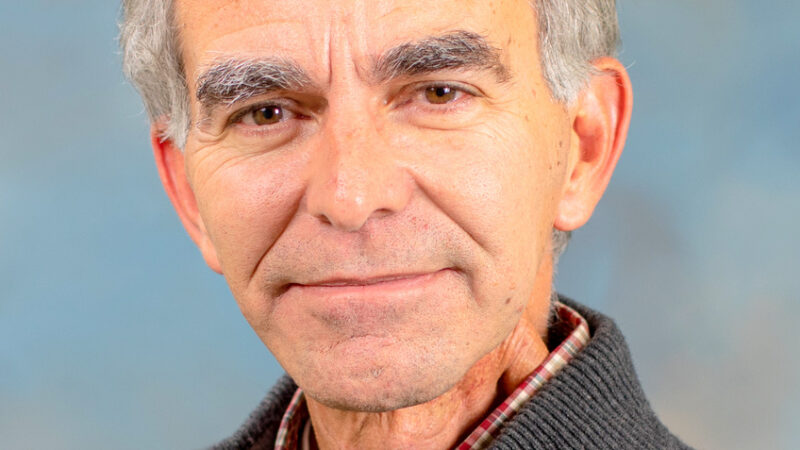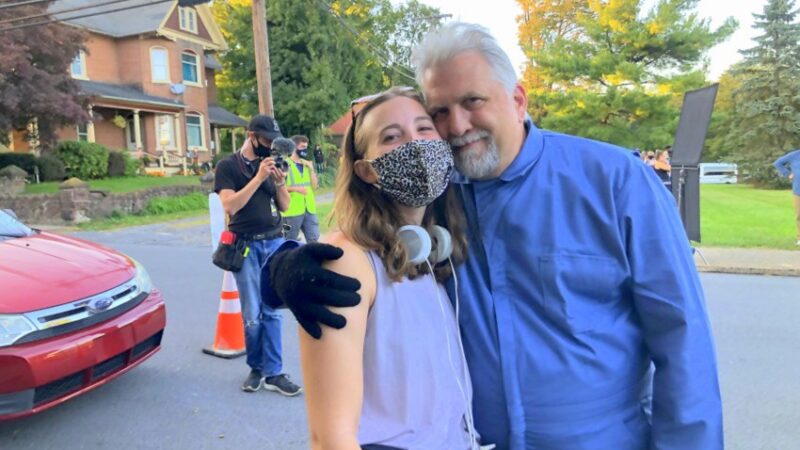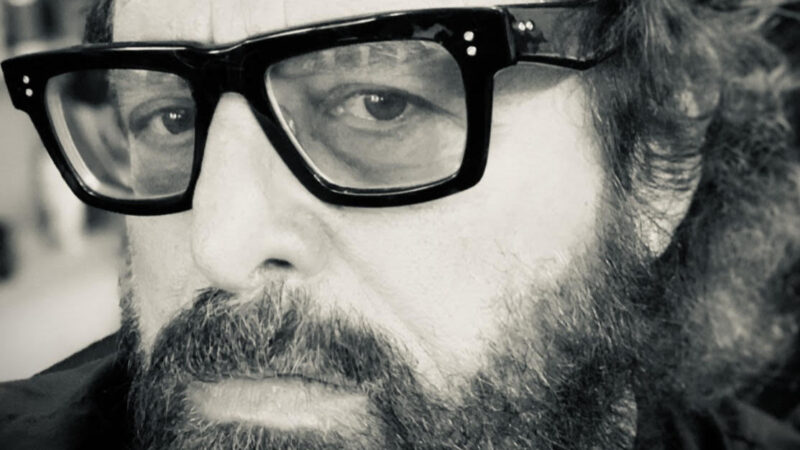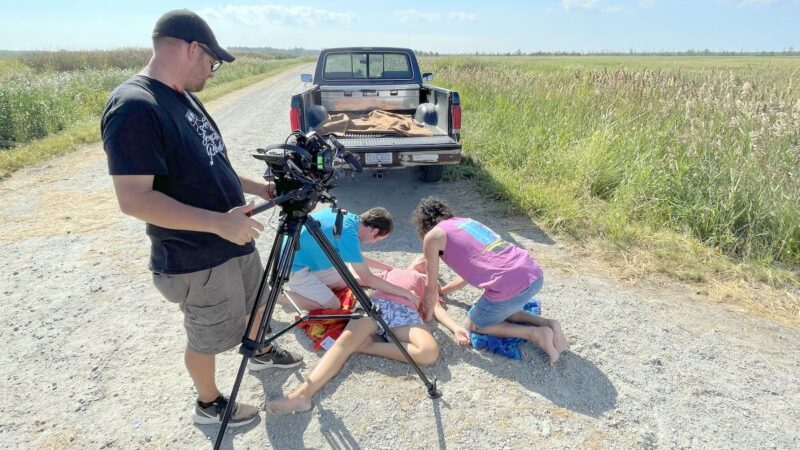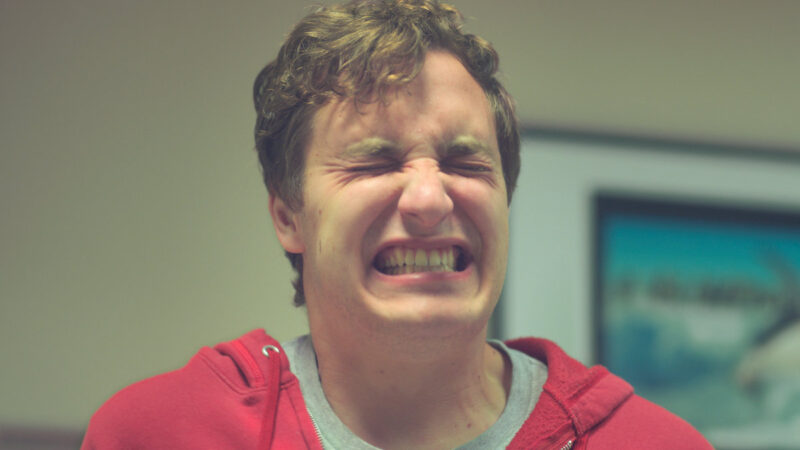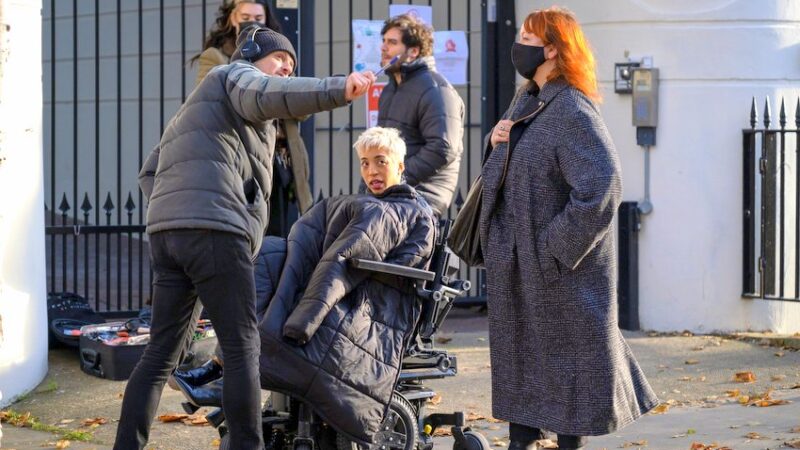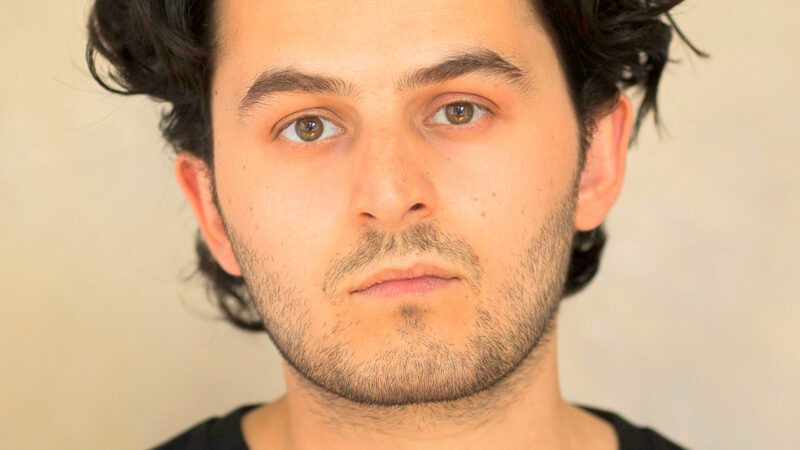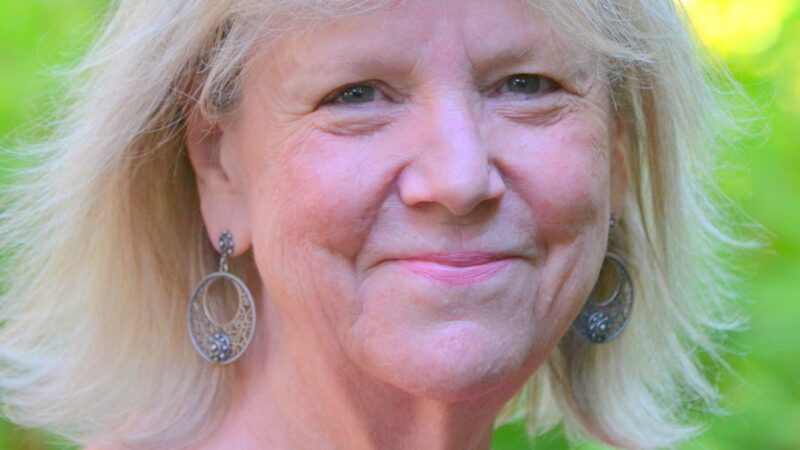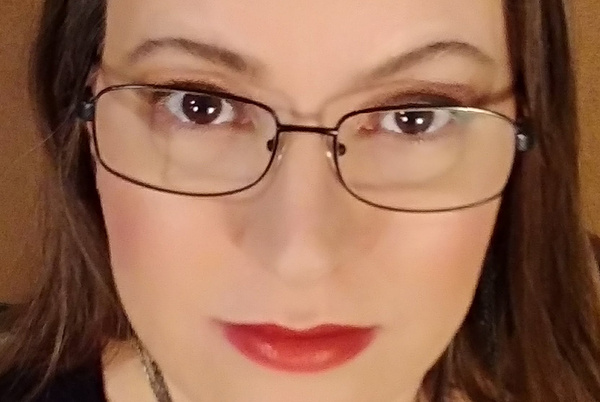
Kate Black was born and raised in Indiana. She went on a student exchange program to Australia right after she graduated high school in 1989. Kate attended college at a small liberal arts college in Missouri. When she realized her needs weren’t being met, Kate transferred to Arizona State University and it was a dream come true.
That dream was cut short by abusive relatives who forced her to withdraw because Kate refused to be a teacher. As it was impossible for her to get financial aid until she was 44. I just recently completed my degree in Film and Communications. I have been a writer and artist my whole life.
indieactivity: Why did you get into filmmaking and screenwriting?
Kate: When I watched “The Making of Star Wars” and “The Making of The Dark Crystal” on television as a child and realized it was possible to get a job in the industry, my fate was decided.
Being a writer or director at the time for girls and women wasn’t even a thought, so I figured I would design and build sets, make costumes and props.
My freshman year in college, I worked in the theater costume shop for work study. A student was making a Crimestoppers commercial and insisted that I take the lead female role, in spite of the fact that I was very shy, not an actress, and had no desire. I was talked into doing it, and I’m glad I did. It was my first filmmaking experience. Also that year in my 3D design class, we designed sets for a play and voted which one to use. My design was chosen for the play, “The Birthday Party” by Harold Pinter. I then worked with my professor to find and create props as well as direct my classmates how to construct the design. Watching the actors use the set was such a thrill! I was hooked. I worked backstage for many college productions.
After my sophomore year when I was forced to withdraw from Arizona State University, I was determined to continue learning about film and film production. That was how I ended up having a short modeling and acting career. When I landed a part as an extra for a Pert Plus commercial, it was the first big, commercial set I had been on. This was before digital filmmaking with big, heavy equipment. The crew was very kind and let me lurk, ask questions and watch them over their shoulders. Later, in Nashville, I auditioned for a part in a music video which gave me a more clear understanding of the casting process.
I learned something from every audition, every job, and every experience. For many years, I didn’t know how I would ever be able to get my hands on the equipment. Then technology changed the whole media game. Now one person can carry tripods, cameras, microphones and it won’t break their back. It also won’t break the bank

This is the location for the film “Vilma and Lanette”
indieactivity: How can an indie filmmaker distribute her film?
Kate: I’m just getting started myself, so I’m still working this out. Online outlets are the way to go, in my opinion. I don’t know anyone who goes to theaters to watch films anymore. Everyone wants to watch at home in their pajamas, including me!
indieactivity: When should an indie filmmaker plan for distribution?
Kate: During pre-production, filmmakers should have a clear vision and plan for the whole project
indieactivity: How can an filmmaker get her film into theatres on an indie budget
Kate: You don’t. While it is possible to negotiate a limited release with local independent theaters, regularly releasing Indie films online will actually reach audiences. In general, people don’t go to theaters to watch films unless they are big, Hollywood special effects films. Otherwise, they wait for it to come out on DVD/Blu-ray or distribution online.
indieactivity: How can filmmakers finance their projects?
Kate: Crowdfunding can be effective. I also recommend doing it the old-fashioned way and saving up bit by bit from a day job. I have found in spite of complaints there isn’t enough diversity in film, people are still mostly backing white men, not women and People of Color. I hope that will change more.
indieactivity: What films have you written?
Kate: IThe only one that is out that I co-wrote with the rest of the team is “Vilma and Lanette.” I have a short that I hope to film sometime this summer and a feature I am working to get a budget for to film in the next two years.
I started writing in high school, and continued through college. I wrote and published three editions of a novel between 2004-2013. It is now clear to me what I need to do is re-write manuscripts as screenplays and go from there.
indieactivity: What films have you completed?
Kate: So far, I have mostly made student films, since I was student! I made one documentary of the local Kansas City Women’s March that took place January 2016.
I also made a comedy or buddy film called “Vilma and Lanette” for the 48 Hour Film Project. The latest Director’s Cut is available for viewing
indieactivity: What is you concept on collaboration?
Kate: All films are collaborative. I write scripts and organize my projects. My approach while directing is to give the actors/actresses as much time as possible with the script and discuss their take on the character. As far as camera work, if I’m not doing it, I discuss my ideas for how scenes should be shot and then come to a consensus.
I have a good nose for talented people and I trust them to do what they do. Once roles have been assigned and filming has started, collaboration is limited, because decisions are made in pre-production. Some people misinterpret collaboration as meaning everyone gets to have input on every aspect of the project. That is not the case. Whoever wrote the script and is funding and organizing the project has every right to choose what is or isn’t a priority. Additionally, the director has to have control over the shoot or it will devolve into chaos. Be respectful of boundaries if you want to maintain your reputation for being professional.
Collaboration is important, but when you are in production, it is important to have everyone’s roles clearly defined so that time isn’t wasted with unnecessary power struggles. Choose a crew that is trustworthy and self-directed. Have meetings and make changes in pre-production so that filming goes smoothly and everyone is on the same page. Have several rehearsals to find what’s not working so that you can re-work before you’re paying for rental equipment and burning daylight.
indieactivity: How do you find the process of filmmaking?
Kate: Exhilarating! Even when things go wrong, break, whatever — I absolutely love shooting. I love making magic happen. It’s such a thrill to work with talented people and in the end have a piece of work that the audience enjoys.
indieactivity: Describe your recent work?
Kate: I began pre-production when we signed up in June. I assembled the team. Our team was the only team participating that was all women and one guy. Our team was also one of the more diverse teams in the competition. I scouted locations and obtained permits for shooting in KCMO parks. I arranged to rent equipment. I scheduled team meetings, and completed all required paperwork. In case we chose the genre of musical, I had the actresses and actor meet for a dance test day to see who could do what since we didn’t know each other well. Everyone felt comfortable to proceed after a couple hours of goofing around. I picked up the equipment since no one else was available.
I only did pre-work that was permitted according to the rules of the competition. I checked in with the local producers every step of the way to make sure I followed the guideline to the letter.
The night of kickoff, we had two team members immediately drop out because they didn’t like the genre and tried to override the group’s consensus that a buddy film or comedy would be ideal. The one person tried to use the fact that we were using their camera as the primary to get their way. It was unfortunate, but the team quickly re-grouped. We wrote a script in a couple of hours, grabbed sleep and got up to begin shooting. That’s when we discovered the actual microphone was missing from the equipment box. So, the sound person and I came up with a way to engineer sound with her Zoom device and I sent her with two team members to a store to get adapters. Our shoot began about 5-6 hours behind schedule using the camera that was originally intended to capture behind-the-scenes shots. We had no backup battery, so we charged the single battery on the one break we took to eat. We completed filming with 20 minutes of charge left.
We went home to re-hydrate and sleep.
I was supposed to have delivery of the score by noon. I started editing the footage when I got up. Originally, the plan was that I would do a portion of editing. I was flying solo and going as fast as I could! My sound person who offered to come help never showed and was asleep. The person delivering the score finally showed up around 3 pm. The deadline for the film drop off was 6:30pm. I edited 6 hours of footage and made credits for a 7 minute film in a little over 2 hours. I successfully rendered the film and delivered it a little early. I then ran to get one forgotten release from a last minute team member and turned that in.
Later that week, our film was screened with the rest of the films in the competition. The big payoff was the three big laughs we got from the audience. We were and are so pleased! To me, a laugh is worth more than any award. I was disappointed that group who did the musical didn’t get first place, because they were amazing.

indieactivity: What are your future goals?
Kate: One of my goals is to choose women for my crew and for onscreen talent at every opportunity. I also write my scripts with the characters being as open as possible with regard to gender and ethnicity. I am working to be part of changing media to be more inclusive and diverse. Women need to be given a fair shot and not be dismissed.
I have several screenplays I am writing and I intend to produce them all in the coming years
indieactivity: What do indie filmmaker need in todays world?
Kate: Independent filmmakers, especially women, need more support and better funding. We need people to stop calling films that have women-centric roles “chick flicks” and dismissing us as less qualified than men. Indie filmmakers also need to continue getting support from online outlets like Netflix. I am a huge fan of Netflix because they show Indie films from around the world and have been key supporters of women taking their place in media.
Short films are a great way to tell stories. Don’t feel like you have to write a feature every single time. All storytelling has merit.
indieactivity: Briefly write about your career?
Kate: I am just getting started! Even though I was delayed, technology has become far more accessible to everyone to make films and that is very exciting. I began writing books and as I learned more about film and took a directing class, it became clear that I should be writing these projects as screenplays. I have several works-in-progress that have been complete and ready for editing. I am changing direction and converting these manuscripts into screenplays. I am hopeful that I can get a budget for my first feature through crowdfunding and private donors. Then, when everyone experiences the results, I plan to continue from there.
I currently run a film funding website basically to fund my future film projects. My demo reel and writing website describe in detail all my endeavours.
Coming soon is a blog post about things filmmakers need to have on their set to prevent major headaches. Coming soon is a blog post about color theory and how it affects lighting design and costume choices when filming.
In my journey learning about filmmaking, directing, film production and film history, I encountered a few great people I’d like to mention. I discovered a young actor, Tim McGuire, in my directing class. My classmate, Josh Stohlberg, used Tim as an actor in a scene and I was blown away. Tim was 20 years old (now 21) and is one of the most talented actors I’ve encountered. He is professional, cooperative, takes direction extremely well, works really hard, and has a fantastic attitude.
The more I write, shoot, direct and edit, the more certain I become. I discovered that I have a natural gift for directing, shooting and editing. I thought I might be good at these things, but never had the opportunity to find out until I went back to complete my degree. My first film professor, Dr. Caitlin Horsmon, is a major inspiration and influence to me. I am very lucky she was my first film professor, because back in 1989 when I started, most professors I encountered were men. (Very intimidating when you’re a woman trying to get a foot in the door at 20 years old.) She is a fantastic teacher and her expertise and encouragement helped me to uncover talents I didn’t know I had.
The last thing I want to share is: No matter where you come from, or how much money you had growing up. No matter what you look like or what your background is—whatever your passion is? Pursue it. I especially want girls to know they can do anything they put their minds to. Anyone who tells you that you can’t do something just doesn’t know you that well. Some things are going to be harder than others. I recommend sticking with it and keep at it until you get it.
Read everything you can. Try everything and know that as you learn, you’re going to fail sometimes because it’s part of the creative process. You only master skills with practice.
Be Teflon and let critics’ words slide right off. Just do whatever it is that you do.
And never, never, ever give up.
Happy filmmaking everybody!
Website | Twitter | Vimeo | Shop | Instagram | LinkedIn | Pinterest
In Conversation with Michael Oblowitz Director of Confidential Informant
Confidential Informant stars Mel Gibson, Dominic Purcell, and Kate Bosworth

